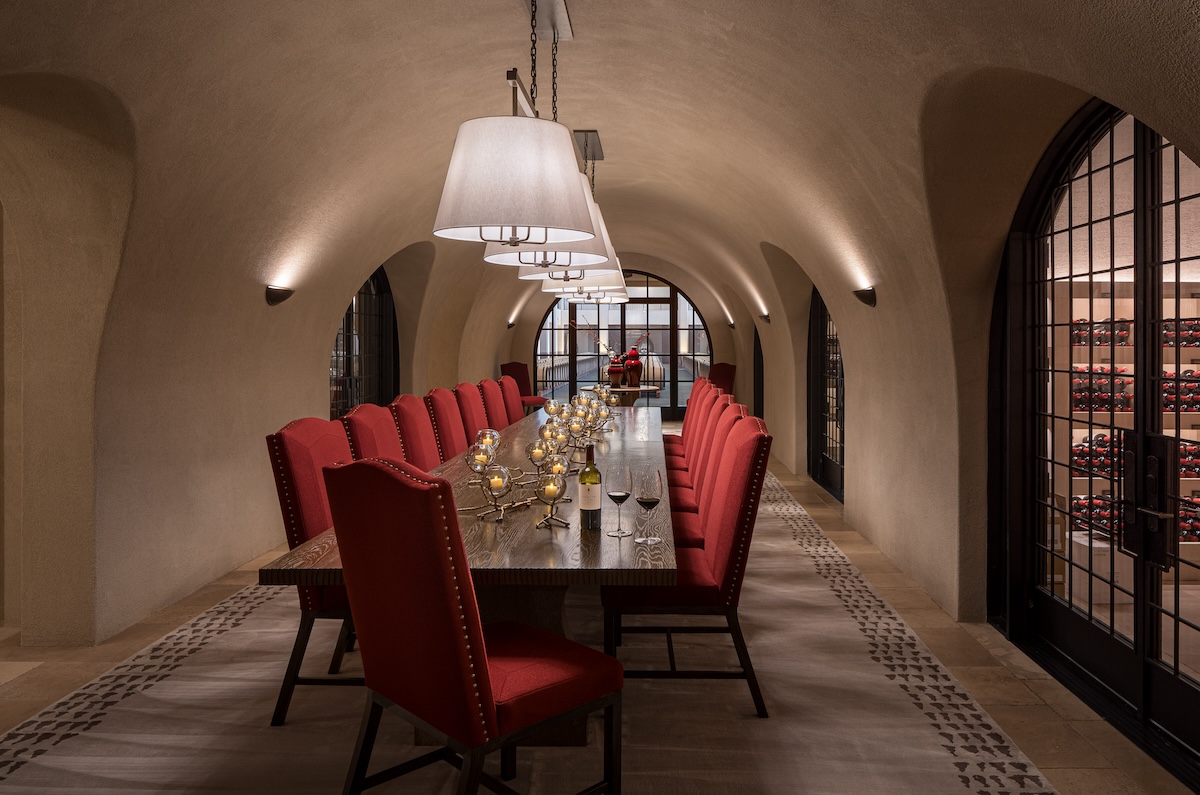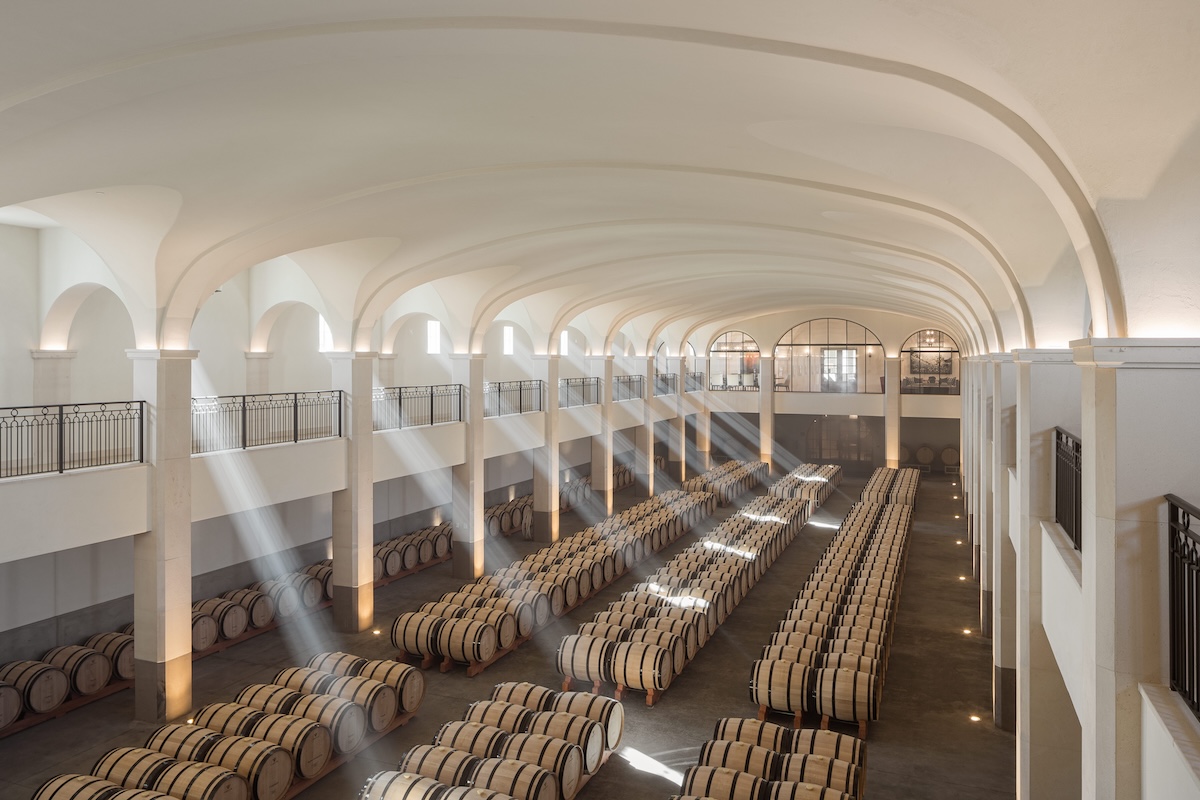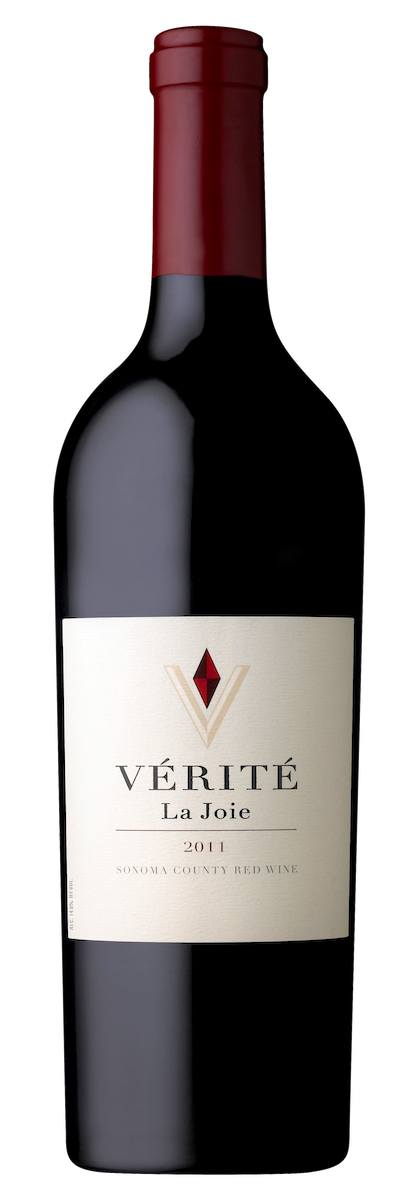
A modern icon blends Old World wine techniques with New World sensibility
To say that Hélène Seillan grew up in the wine world would be an understatement akin to insisting that the French like the occasional glass of dry red. Decades before becoming the assistant winemaker at Vérité Estate in Healdsburg, California, she was shuttled, at just three years old, between vineyards and cellars in her native Bordeaux, where her father, Pierre Seillan, was a sought-after vintner.
“During harvest, my mom would take me on weekends to the different wineries. It was before cell phones, so that was the only way I could still know that I had a dad for three months out of the year,” Hélène laughs, fingertips playing along the stem of a wineglass in a narrow, lushly appointed dining room. This is just one of several hospitality spaces in Vérité’s new chateau, a grand, French-style stone building with interiors decorated in a fusion of classic European grandeur and California easiness. Its centerpiece is the barrel chai, where the wines are funneled from the neighboring production facility via an underground transfer system to rows of wooden casks beneath a dramatic vaulted ceiling.


The Seillans moved to California in the mid-1990s, lured by the promise of winemaking in a region that was full of potential and loose on regulations, as well as by American legends Jess Jackson and Barbara Banke of Jackson Family Wines. Convinced they’d found the next big wine region, Jackson and Banke purchased property in Sonoma County—then the redheaded stepchild to Napa Valley and its much-ballyhooed big, bold Cabernets.
Beyond clusters of oak trees dripping with lace lichen, and high up on the slopes where Chalk Hill meets the Alexander Valley and Knights Valley, Vérité—French for “truth”—was different from its inception in 1998. The soils and temperatures of Sonoma County, which lies in the shadow of the Mayacamas Mountains, vary from appellation to appellation and benefit from the cooling breezes off the Pacific Ocean. This diversity allows grape harvesting from 50 different micro crus—small, hand-farmed, low-yield vineyard blocks.
The short-term result: dozens of expressions between varietals. The long-term result: seventeen different 100-point vintages.
Hélène began working alongside her father in the early 2000s, starting at the “bottom, bottom, bottom,” she says. “My dad’s a pretty tough guy, and because I’m his daughter, I think he was even harder on me than on others.” Following a brief stint in a California junior college, she returned to Bordeaux for a two-year viticulture and oenology program—which she agreed to on the condition that she would spend half her time working with her hands.

While she enjoyed learning theory, she found classroom practice stifling. “Sometimes we had exercises like ‘make the best wine possible,’ and I was getting really bad scores because they didn’t agree with how I did it,” Hélène explains. “My dad and I are a lot of alike in that we’re very artistic. Sometimes we don’t know why we do things. There’s this little voice inside that leads us to this or that in the blends, and it just works.”
That petite voix has guided every vintage since her first in 2006. In 2013, the year she was elevated to assistant winemaker, Hélène had her first big test: coming up with Vérité’s three main blends. Pierre declared two excellent as-is. The third he modified by a small percentage of one varietal. It became the only one of the trio not to receive a full 100 points from Robert Parker that year.
Hélène stands poised to eventually take the reins of a program that regularly tops critics’ score charts and collectors’ lists. It’s significant in an industry where women are often better at detecting aromas and flavors in wine, yet, according to a 2020 study by Santa Clara University, only 14 percent of vintners are female. She isn’t daunted by this, or by Vérité’s potential to bring Sonoma wines to the world stage.

Still, Hélène isn’t interested in putting her own stamp on Vérité. “I’ve never had an ego about it, and I’ve never needed to shine. Every time somebody asks me, ‘What are you going to bring that’s new?’ It’s like, ‘I’m not.’ I want to keep Vérité, Vérité. It shouldn’t be about us. It’s about the land and the signature of the wine.
“I want people to approach Old World-style wines with an open mind, and know we’re not making a copy,” Hélène concludes. “It’s not about being better, but being part of an ongoing conversation.”
A Tasting of Vérité Wines with Hélène Seillan
“I love the challenge of food pairing,” says Hélène, who once entertained a career as a chef. Here she offers her tasting notes and pairing advice on three of Vérité’s standout vintages.
1998 Vérité La Muse

Vérité’s first wine, the Merlot-base La Muse was born of Pierre Seillan and Jess Jackson’s love of Right-Bank Bordeaux (Pomerol). 1998 La Muse has aromas of Spanish cedar, sweet tobacco, cranberry, dried red currant, and black cherry, along with earthy notes of freshly turned soil and black summer truffle. On the palate, the texture is lithe and elegant, with velvety tannins and refreshing acidity. Contrary to conventional theory, Hélène serves this red with seafood, from seared scallops to lobster with drawn butter, or trout beurre blanc.
2011 Vérité La Joie

The cool temperatures, rain, and cloud cover of 2011 posed a challenge for many California vintners. While all three expressions of 2011 Vérité have aged well, Hélène calls this La Joie “exceptionally satisfying.” Reminiscent of a classic vintage from Pauillac, its nose is characterized by deep red and stone fruits, with earthy and spicy notes like mushroom, oak, cocoa, clove, and nutmeg. The wine pairs wells with fat- and protein-rich foods like seared New York strip with buttered scalloped potatoes, or Sonoma County Dry Jack cheese.
2013 Vérité Le Désir

This was the first vintage that Hélène blended by herself, marking Vérité’s transformation into a multigenerational winery. Rich but with a refreshing acidity, it has notes of dried blackcurrant and blackberry coulis balanced by quintessential Cabernet Franc aromas like fresh cut greenery, black tea, and black pepper. The palate is both powerful and elegant, with a juicy acidity, firm tannins, and dried stone minerality leading to a very long finish. Hélène recommends pairing this Cabernet Franc-based blend with aged Comté cheese.
The post Crushing It: Old World Wine Techniques with New World Sensibility appeared first on JetsetMag.com.

 German (DE)
German (DE)  English (US)
English (US)  Spanish (ES)
Spanish (ES)  French (FR)
French (FR)  Italian (IT)
Italian (IT)  Macedonian (MK)
Macedonian (MK)  1 year ago
63
1 year ago
63








Comments